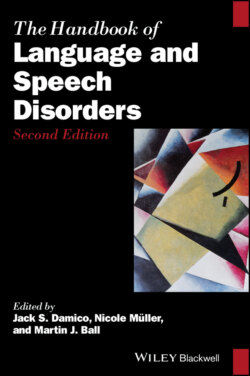Читать книгу The Handbook of Language and Speech Disorders - Группа авторов - Страница 40
3.1 Introduction
ОглавлениеHearing loss is a symptom associated with multiple disease processes, a receptive communication condition that corrodes social interaction and, as an acquired condition, it is a curse with many concomitant effects. Approximately one in a thousand infants is born with hearing loss and after the age of 60, many of us will experience some form of hearing loss regardless of what we have been exposed to in the form of noise, substances or diseases. This foundational chapter will review recent advances in the causes of, and problems associated with, hearing loss, while also presenting advances in the treatment of these, particularly those ushered in by the mainstream adoption of the cochlear implant (CI). This device is surgically implanted into the inner ear of a patient and transmits acoustic energy into electrical pulses that are picked up by the auditory nerve and relayed to the brain. We will also consider the auditory limitations imposed on listeners that use CIs in their daily communication. For the purpose of this chapter we will focus on hearing loss associated with the inner ear and the peripheral auditory neuraxis, that is, sensorineural hearing loss.
In discussing cochlear implantation, we have recourse to a number of established models which provide detail for: (a) the patient journey from the onset of hearing loss to a postoperative period where speech perceptual results have stabilized; (b) speech production, and the pre‐articulatory comparison of acoustic projections of a target with its realization, with regards to the period of auditory deprivation prior to CI use. Furthermore, we review literature that examines speech perception by CI recipients according to a teleological framework that addresses the gamut of speech perceptual competencies that are drawn on during receptive communication, from identifying segmental attributes to deducing the inferred communicative intent of a speaker.
